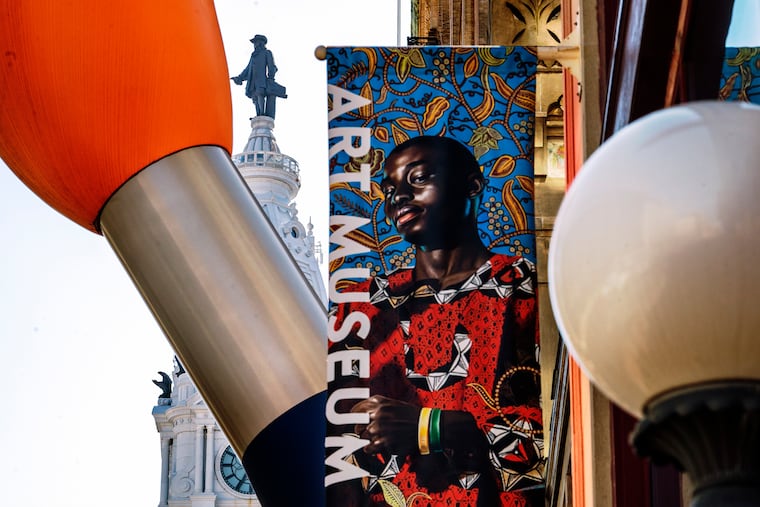From Mary Cassatt to David Lynch: Here are some famous PAFA graduates
Once regarded as one of the most liberal art schools in the world, PAFA is shutting down its college. Here are some artists who passed through the school's hallowed gates.

The Pennsylvania Academy of the Fine Arts is the country’s oldest institution that is both a museum and school. On Wednesday, the organization announced that it will be winding down its degree-granting programs. Once regarded as one of the most liberal art schools in the world, PAFA has a history that is studded with alumnus whose work redefined the way the world sees and understands art.
Here are a few of them:
The Peale Family. Sarah Miriam Peale (1800-1885) and Anna Claypoole Peale (1791-1878) were sisters and artists who were the first women to be elected academicians at PAFA. Anna Claypoole drew portraits on ivory and Sarah Miriam was one of the first women to have a successful career in art. She drew portraits of notable figures — including Lafayette, who sat for her four times. Their uncle, Charles Willson Peale, was one of the cofounders of PAFA. Charles Willson Peale’s granddaughter, Mary Jane (1827-1902) — also a PAFA alumna — was one of the last professional artists from the Peale family.
Mary Cassatt (1844-1926) was an impressionist painter and printmaker who collaborated with Degas, someone she has often been compared to. At 15, going against her family’s wishes, Cassatt studied painting at PAFA. Frustrated by the limited access female students of art enjoyed (they couldn’t use live models and had to replicate casts), Cassatt withdrew from the Academy and moved to Paris.
Thomas Eakins (1844-1916) was arguably one of America’s most important artists. An arts educator who encouraged students to embrace modern techniques, Eakins also served as PAFA’s director from 1882, steering the institution to be one of the most liberal and advanced art schools in the world.
Alexander Milne Calder (1846-1923) was a sculptor who created the sculptures adorning Philadelphia City Hall, a project that took more than two decades to complete. Calder also created the bronze statue of William Penn that overlooks the city of Philadelphia from the top of City Hall.
Henry Ossawa Tanner (1859-1937) was one of the Academy’s first African American students. He was taught by Eakins and was friends with Robert Henri. His Portrait of the Artist’s Mother is a part of the Philadelphia Museum of Art’s permanent collection, and Sand Dunes at Sunset, Atlantic City (1885) was the first painting by an African American artist acquired by the White House permanent collection.
Jessie Willcox Smith (1863-1935) was an illustrator who was considered one of the country’s finest. Her Mother Goose illustrations for Good Housekeeping are some of her most well-known works. They were featured on each of the magazine’s covers from December 1917 through April 1933. In 1991, she was the third woman to be inducted into the Hall of Fame of the Society of Illustrators.
Robert Henri (1865-1929) was a painter once named one of the top three living American artists by the Arts Council of New York. In his bid to move away from impressionist art, Henri advocated for more realist styles of painting. He is considered the spiritual father of the Ashcan School, which focused on depicting the “everyday lives” of people in America, especially those living in the economically weaker parts of cities. The group of illustrators who called themselves the “Philadelphia Four” — William Glackens, George Luks, Everett Shinn, and John Sloan — were his protégé.
Maxfield Parrish (1870-1966) was a painter and extremely successful illustrator whose work appeared on Harper’s Bazaar and many children’s books. The National Museum of American Illustration called his painting Daybreak (1922) the most successful art print of the 20th century.
Alexander Stirling Calder (1870-1945) was a sculptor, and son of Alexander Milne Calder, whose most famous works include the Swann Memorial Fountain in Philadelphia and the statue of George Washington as president on New York City’s Washington Square Arch. His son, Alexander Calder, is also an artist famous for his mobiles and public sculptures.
Arrah Lee Gaul (1888-1980) was the first woman to have a solo exhibition at the Philadelphia Art Club. She was one of the original members of the Philadelphia Ten, a group of female artists who exhibited together from 1917 to 1945. Katharine Marie Barker and Katharine Hood McCormick — both PAFA alumnae — were also original members of the Ten.
Henrietta Myers Miller (1913-96) was the surrealist painter who went by the name “Peter Miller,” and is often called the “forgotten woman of American Modernism.” Heavily influenced by Juan Miró, Miller was also inspired by Indigenous cultures of Mexico. She and her husband, artist C. Earle Miller, gave the 1920 Miró painting Horse, Pipe and Red Flower (Still Life with Horse) to the Philadelphia Museum of Art.
Barkley L. Hendricks (1945-2017) was a contemporary artist who is best known for his life-sized painted oil portraits of Black subjects. This includes Lawdy Mama (1969), Icon for My Man Superman (Superman never saved any black people — Bobby Seale) (1969), Brilliantly Endowed (Self portrait) (1977), and Sir Charles, Alias Willie Harris (1972).
David Lynch (1946-) is a filmmaker and artist known for such surrealist films as Eraserhead (directly inspired by his fearful stay in Philly during and after his PAFA years), The Elephant Man, and Mulholland Drive. It was at PAFA that Lynch made his first film, a short called Six Men Getting Sick (Six Times).
Njideka Akunyili Crosby (1983-) is a Nigerian-born artist honored with a John D. and Catherine T. MacArthur “Genius” Grant in 2017. Her 2013 portrait of Thelma Golden, chief curator of the Studio Museum in Harlem, is part of the collection at the National Portrait Gallery.